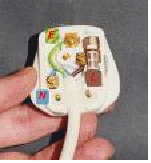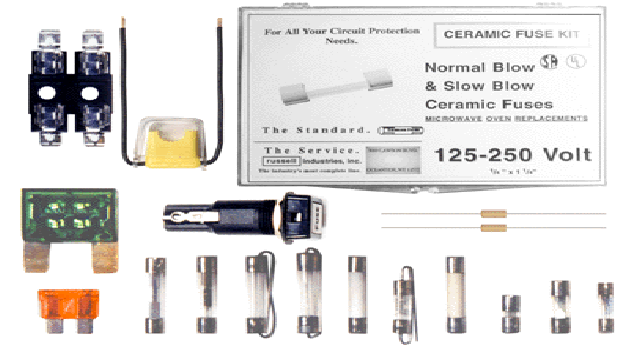A fuse is fitted in electric circuits to protect components from too much current and anybody present from electric shocks. Its essential component is a metal wire or strip that melts when too much current flows. When the fuse melts the circuit is broken and no current may flow until a new fuse is fitted. A large current may occur if, for example a loose wire in an electrical appliance touches a metal casing. The casing may become live. In the absence of precautions, if someone touches the casing they receive an electric shock. To prevent this, the case is earthed – the third, yellow wire in a plug shown below.

When the live wire touches the case, a large current flows and the fuse blows. Each fuse is rated for a particular current. A 3 amp fuse can safely pass a 3 amp current for example. Each electrical device also has a current rating. The correct rating of fuse must be fitted in each piece of equipment. If a fuse is fitted with too large a rating, then neither the user or the equipment may be protected.

